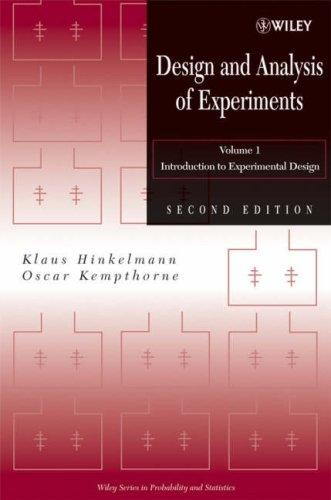13.5 Consider an experiment where the amount of dry matter is measured on wheat plants grown in...
Question:
13.5 Consider an experiment where the amount of dry matter is measured on wheat plants grown in different levels of moisture and with different fertilizers using a split-plot-type design (Milliken and Johnson, 1984). There are 48 different peat pots and 12 plastic trays; four (4) pots can be put in each tray. The moisture treatment consists of adding 40, 80, 120, or 160 ml of water to the tray, where it will be absorbed by the pots. The levels of moisture are assigned randomly to the trays such that each moisture level occurs 3 times. The fertilizer treatments are represented by all possible combinations of 0 and 1 unit of nitrogen, and 0 and 1 unit of phosphate. The fertilizer is applied individually to each pot in a tray such that each combination occurs once in each tray. (i) What are
(a) the whole-plots,
(b) the split-plots,
(c) the whole-plot treatment,
(d) the split-plot treatment? (ii) What kind of split-plot-type design is this? Write out an appropriate linear model. (iii) Outline the ANOVA table in as much detail as possible based on the de- scription of the experiment (give sources of variation and d.f.). (iv) Explain how you would test whether nitrogen has an effect on dry matter. (v) The researcher is interested in finding out whether there exists a linear trend for the effect of moisture on dry matter. Give an expression for the estimate of the linear trend and its standard error (= square root of the estimated variance).
Step by Step Answer:






